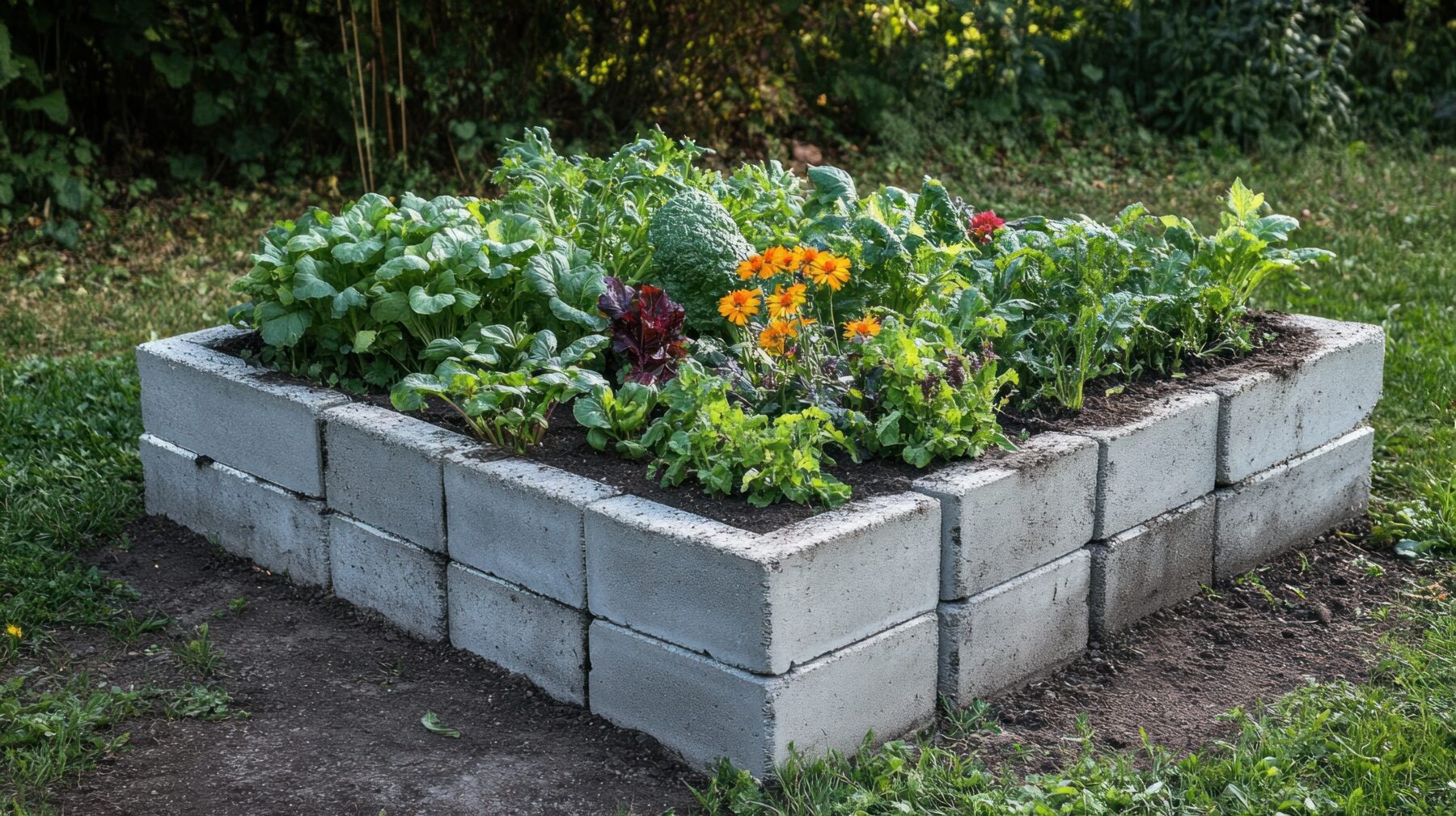DIY Raised Garden Beds with Concrete and Stone Materials
April 22, 2025

Raised garden beds made from concrete and stone aren’t just a trend. They are a durable, low-maintenance alternative to traditional wood beds. Unlike wood, which rots and warps over time, concrete and stone hold their shape, resist decay, and stand up to harsh weather. They do more than serve a function. They add structure and refinement to any garden, blending seamlessly into modern landscapes.
Choosing the Right Materials
Concrete and cinder blocks are among the most affordable and practical options. Their weight keeps them in place, and their modular design allows for creative stacking that improves drainage. A coat of paint or a decorative finish can soften their industrial look, making them more adaptable to different garden styles.
For a more polished appearance, interlocking stone offers both durability and aesthetic appeal. These stones fit together neatly, allowing for flexible layouts that can be adjusted over time. A solid foundation is key. Paver base sand helps level the ground. Landscape adhesive locks stones and blocks in place, preventing shifting.
Designing a Functional Layout
A well-built garden bed is not just about looks. It should make gardening easier. Drainage is critical. Without it, water collects at the base, leading to root rot. Small drainage holes or a gravel layer inside concrete blocks help manage moisture.
Width also plays a role. Beds between two and four feet wide allow easy access without compacting the soil. Taller beds, between 18 and 24 inches, are ideal for deep-rooted plants. Longer beds may need extra reinforcement to prevent bowing.
Pathways between beds should be wide enough to move through comfortably. Extra space allows a wheelbarrow to fit easily, making maintenance much easier.
Step-by-Step Construction
Location is everything. The spot should get at least six hours of sunlight per day. The ground must be level. An uneven base creates structural issues over time.
Start with a base layer of paver sand for even support before stacking begins. Concrete blocks should be staggered for added stability. If using poured concrete, build a form before mixing and pouring. Stones and blocks stay secure with adhesive or rebar reinforcements where needed.
For weed control, landscape fabric is not the only option. A layer of cardboard beneath the soil works well while maintaining soil structure.
Maintenance for Longevity
Regular upkeep makes a difference. Clearing debris and checking for shifting or cracked stones keeps beds in top shape.
Pests and weeds will always be a challenge, but companion planting helps. Herbs like basil and marigolds naturally repel insects, reducing the need for chemical treatments.
Watering should be efficient, not excessive. Drip irrigation or soaker hoses deliver moisture directly to the roots, conserving water and preventing overwatering.
Sustainable Considerations
Concrete is tough, but its production has a high carbon footprint. Using recycled concrete, permeable materials, or repurposed stone reduces environmental impact. Sourcing materials locally also cuts down on transportation emissions.
Selecting the Right Plants
Raised beds create ideal conditions for plants that thrive in well-drained soil. Vegetables like tomatoes, lettuce, peppers, and kale do especially well. Herbs such as cilantro, parsley, and basil serve both culinary and companion planting purposes. Flowers bring color, attract pollinators, and contribute to a balanced garden ecosystem.
Concrete and stone raised garden beds are built to last. They offer a long-term, low-maintenance solution for home gardeners. With smart planning, the right materials, and a focus on sustainability, they do more than improve the garden. They transform the entire outdoor space.

